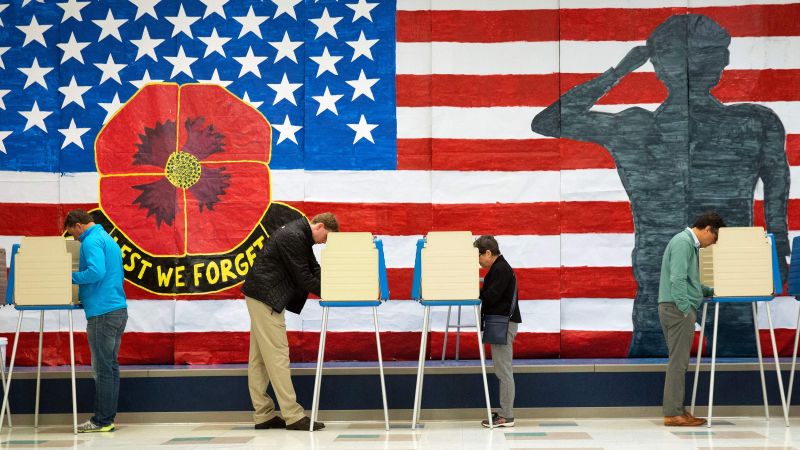

CNN
—
A lot of people have tried to draw lessons from the 2022 elections, which ended earlier this month. Whether it be Democrats’ historically strong performance for a party in power during a midterm or the lack of Senate incumbents losing, the takes have been aplenty.
But perhaps the most important lesson as we head into the 2024 cycle hasn’t gotten enough oxygen: the closeness of the 2022 midterms. Indeed, an examination of the data reveals that 2022 was a historically close election in a historically divided era.
Let’s start with seat counts in governorships and in the House and Senate. Post-election, neither party dominates. Republicans have maintained the thinnest majority of governorships (52%) and House seats (51%). Democrats will control the Senate with a bare majority (51% of the seats).
It’s not unusual for any one of these (governorships, House seats or Senate seats) to be narrowly split. After all, we’ve just had two years in which each party has held 50 Senate seats.
What is unusual is to have all three be so closely divided. By my count, this is apparently the first time since the popular election of senators (1914) when neither party will hold more than 52% of governorships, House seats or Senate seats.
When you examine the vote counts from the 2022 election, the closeness becomes even more apparent. Republicans won the House popular vote by less than 3 points and would likely have won by about 2 points had both parties run candidates in every district. That would have been the second-closest midterm margin in the House popular vote in the last 70 years.
The popular vote margins in governor’s and Senate races this year were even closer. There were 36 gubernatorial races in 2022, with Democrats winning more votes cast for governor in total than Republicans – by less than 0.3 points.
That margin was the closest in midterm- or presidential-year gubernatorial races since at least 1990.
The margin in Senate races was still tighter. Republican candidates for Senate won more votes than Democratic candidates – by 0.1 points. Democrats likely would have gotten more votes had they run a candidate in Utah instead of endorsing independent Evan McMullin.
Still, the 0.1-point popular vote margin was the closest in Senate races in any election since at least before the beginning of World War II.
Not every state held gubernatorial and Senate races this year, but those that did were well representative of the country as a whole when looked at together. They collectively voted for Joe Biden in 2020 by a margin comparable with his actual national popular vote advantage.
What makes the closeness of the 2022 elections especially notable is how it exemplifies an electorate that has been quite divided for nearly 35 years.
We have not had a presidential election in which the popular vote was decided by double-digits since 1984. This streak of single-digit elections is the longest since most states began popularly electing presidents in the 1820s.
The largest margin in the House popular vote since 1984 was the nearly-11-point win Democrats notched in the 2008 election. In fact, the last time the House popular vote margin was 11 points or more was 40 years ago, in 1982. We haven’t seen such a string of close results in the House popular vote in 200 years.
Political scientists have debated the reasons for this tight set of recent elections. Arguably, the best explanation is political polarization. The era of liberal Republicans and conservative Democrats is mostly gone now. The pool of swing voters has, accordingly, shrunk.
But that hasn’t made swing voters any less valuable today. These voters, who go back and forth between the parties, remain highly sought after by Democrats and Republicans, and they can make all the difference. For instance, a number of purple states (such as Nevada, New Hampshire and Wisconsin) elected candidates of different parties for governor and senator this year.
The 2024 election will undoubtedly see both parties trying to win over these swing voters. The early read suggests neither party can feel secure about their chances. You can find polls that have Biden (the likely Democratic nominee) and his likely Republican opponent (either former President Donald Trump or Florida Gov. Ron DeSantis) within a few points of each other among this group.
The bottom line is: Neither party has a lasting majority from the public. That was true in the historically close election of 2022 and in the historically divided era of the last 35 years. And it could very well also be also true in the next presidential election.
